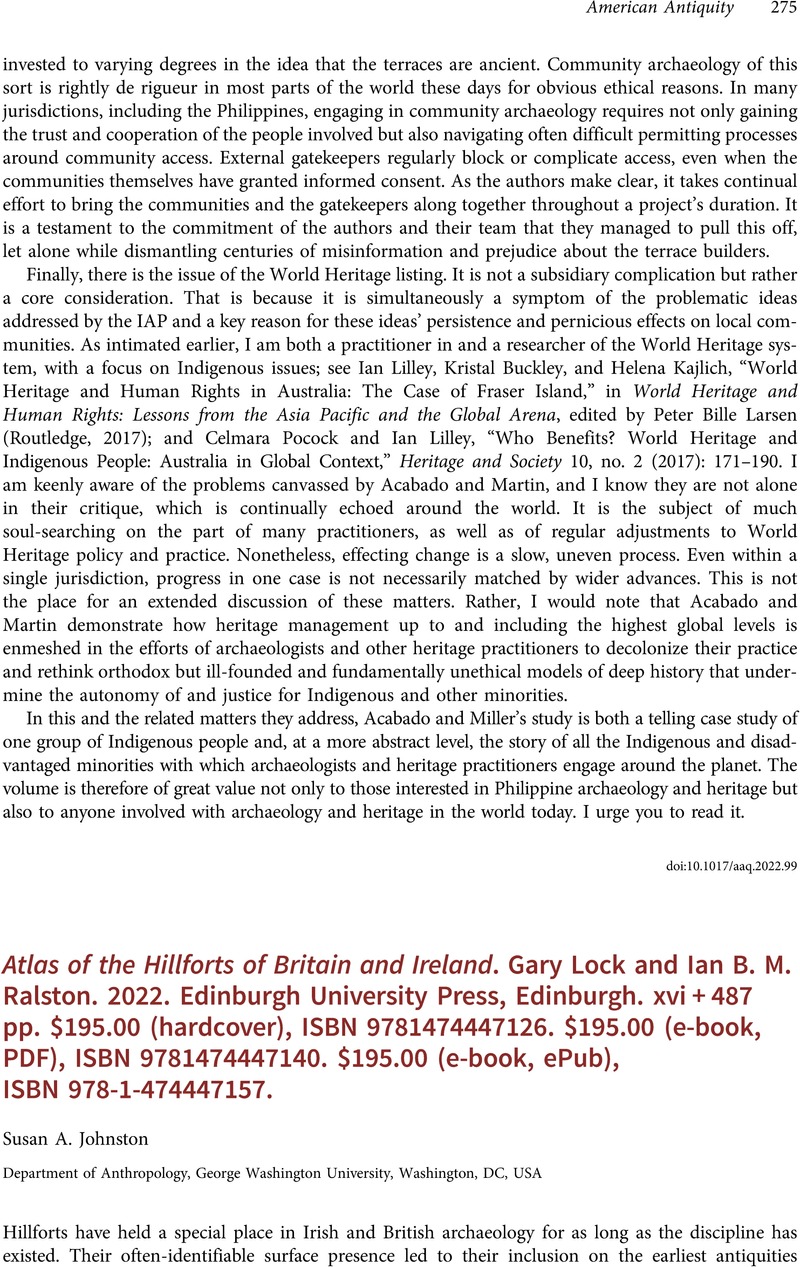No CrossRef data available.
Article contents
Atlas of the Hillforts of Britain and Ireland. Gary Lock and Ian B. M. Ralston. 2022. Edinburgh University Press, Edinburgh. xvi + 487 pp. $195.00 (hardcover), ISBN 9781474447126. $195.00 (e-book, PDF), ISBN 9781474447140. $195.00 (e-book, ePub), ISBN 978-1-474447157.
Review products
Atlas of the Hillforts of Britain and Ireland. Gary Lock and Ian B. M. Ralston. 2022. Edinburgh University Press, Edinburgh. xvi + 487 pp. $195.00 (hardcover), ISBN 9781474447126. $195.00 (e-book, PDF), ISBN 9781474447140. $195.00 (e-book, ePub), ISBN 978-1-474447157.
Published online by Cambridge University Press: 30 January 2023
Abstract
An abstract is not available for this content so a preview has been provided. Please use the Get access link above for information on how to access this content.

- Type
- Review
- Information
- Copyright
- Copyright © The Author(s), 2023. Published by Cambridge University Press on behalf of the Society for American Archaeology


